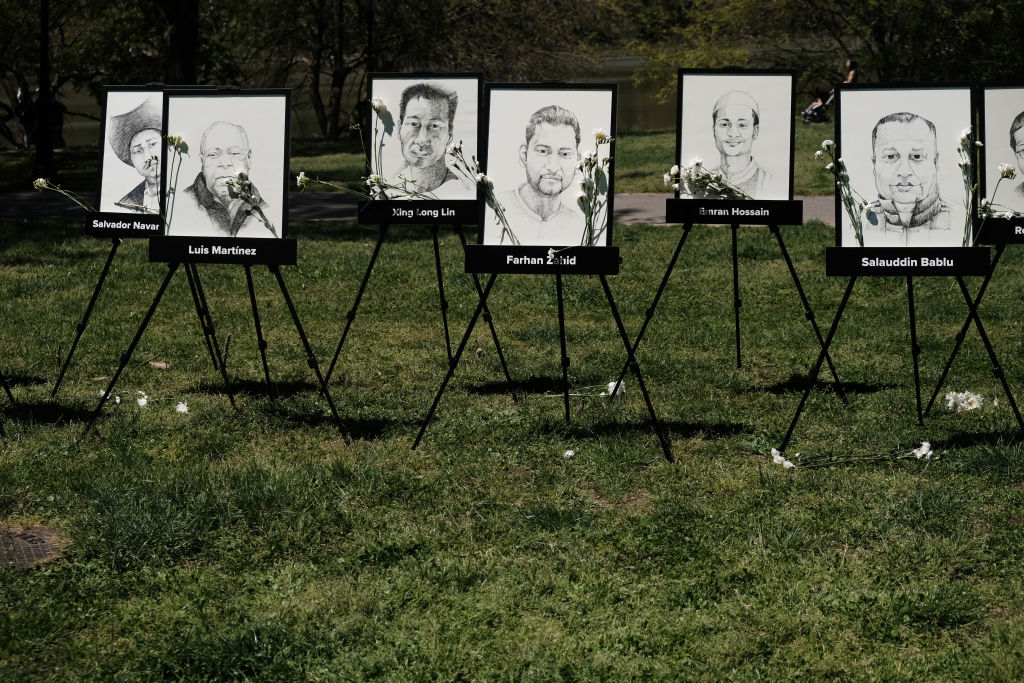
Last week, we were told the President of the United States has COVID-19, but it wasn’t a big deal, as White House press secretary Karine Jean-Pierre told the media: “We knew this was going to happen. At some point, everyone is going to get COVID.”
Leana Wen, the former health commissioner of Baltimore, chimed in in the Washington Post endorsing Jean-Pierre’s fatalism, adding: “Another key lesson is that it’s inevitable that everyone—even the president of the United States—will be exposed to the coronavirus[…]COVID-19 is a manageable disease for almost everyone, so long as they use the tools available to them.”
Manageable. Except we have daily deaths hovering around 400 per day, making the U.S. the worldwide leader in COVID-19 associated mortality in absolute terms, with only a few real competitors among nations of our size and wealth if we look at it per capita or in terms of excess deaths per capita as well. In addition, we’ve had about 40,000 people hospitalized, about 4600 in intensive care over the past week or so.
And this is on top of what Boston University’s Jacob Bor calls our “missing Americans,” those we have lost to early death compared to other rich nations. Bor and his team estimate that if U.S. age-specific mortality rates had equaled those of other wealthy nations we would have saved 626,353 in 2019 before COVID-19 struck. In 2021, there were 1,092,293 “Missing Americans” in the midst of the pandemic.
So much winning.
More from TIME
One has to wonder what the hell is going on. When did it become aspirational as a nation, to reach for the top slot in COVID-19 mortality, to ignore the fact that we are losing hundreds of thousands of Americans yearly to early death even before the pandemic and that our life expectancy ranks in the 30s or 40s compared to other nations, and we’re expected to drop down into the 60s by 2040.
In fact, the manic insistence that we “get back to normal” from the White House on down, that we have the tools to manage the pandemic, that public health is now a matter of “you-do-you” in terms of mitigation efforts (wear a mask if you want to, but don’t if you don’t!) is part of the problem.
You see we have a wonderful healthcare system in the U.S., the best money can buy, and we spend more on it than any other nation as well, even as our life expectancy as just described should make us think hard about the return on investment we’re getting. What we don’t have are two key ingredients needed to raise us up to a healthier state of affairs.
First, we simply don’t have what we need to keep us healthy—a robust set of social protections like our peer nations, which strongly determine our risk for getting ill and getting better in the first place. You may think it’s the biomedical innovations of the past century that save the most lives, often it’s much simpler than that: having a roof over your head, food to eat, a good job. It’s no coincidence that those who are better off do better in terms of health as they purchase what we call the social determinants of health at a premium.
Second, for all the money we spend on healthcare, we spend a fraction of that on public health, with estimates between 1.5 to 2.5 cents spent on public health for each dollar on healthcare. For the past two years, people have been frustrated by the public health response to COVID-19, but with these facts in mind, perhaps we can agree that the expectations here have been like asking a 30-year-old used car to perform like a Ferrari just out of the showroom. With a public health system under-funded, under-staffed keeping America healthy is almost impossible to do.
And what the current response to COVID-19 in the U.S. tells me is that things are not likely to get better. While the White House and its surrogates trumpet “we have the tools” to combat the pandemic, they ignore the fact that in the U.S., access to these tools is not guaranteed and once again your personal resources determine your fate. The most vociferous of these commentators, like the New York Times’ David Leonhardt, even castigate those trying to keep themselves and those they love safe as barriers to getting back to normal. While the U.S. President and these well-known individuals have access to everything they need, too many Americans are on their own. This is policy set from privilege. The only thing wrong right now for them is that we are not getting back to normal fast enough.
The rest of 2022 offers us more deaths and hospitalizations, millions of new infections with some riding them out because they have what they need to do that, some struggling as even a minor infection sends their households in to chaos and some sadly saddled with long COVID, which most of our policymakers are trying their hardest to ignore. Meanwhile in the background are the ghosts, the missing Americans that Jacob Bor has brought out into the light as much as America would like to bury them, their memories, our shame.
We have no interest in combating this pandemic any longer, nor do we really show any ambition in American competitiveness in saving lives overall. We are happy to live with death. It’s the American way of life.
More Must-Reads from TIME
- Introducing the 2024 TIME100 Next
- The Reinvention of J.D. Vance
- How to Survive Election Season Without Losing Your Mind
- Welcome to the Golden Age of Scams
- Did the Pandemic Break Our Brains?
- The Many Lives of Jack Antonoff
- 33 True Crime Documentaries That Shaped the Genre
- Why Gut Health Issues Are More Common in Women
Contact us at letters@time.com